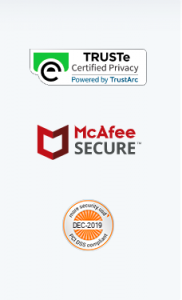Description
In your own words, describe the key drivers of information systems infrastructure evolution. Choose one current information systems trend and describe the value it is providing to the enterprise. Identify two challenges in managing the infrastructure and how the industry is providing solutions for those challenges. Feel free to choose readily available solutions.
Have you heard the acronyms: ERP, SCM, CRM? They are enterprise resource planning, supply chain management, and customer relationship management respectively. Choose one of the three systems and describe its value to the organization. What are the challenges of implementing such a system? Who are the key vendors in the chosen system?
Be sure to respond to at least one of your classmates? posts.
-
Post from William that you have to reply back
The biggest drivers I have encountered in the evolution of information systems infrastructure are hyperconverged systems and cloud-based systems. Hyperconverged infrastructure (HCI) is a software-defined, unified system that combines all the elements of a traditional data center: storage, compute, networking and management. (1.) Hyperconverged systems allow an organization to utilize hardware to its maximum potential, while reducing the hardware footprint. Over the past years, I have witnessed first hand the reduction in hardware in organizations embracing a hyperconverged system. Cloud-based systems have revolutionized information systems over the past few years. With cloud-based systems, organizations reduce hardware, provide flexibility for access, and increased loss prevention. The migration to a cloud-based system allows organizations to become less reliant on on-site hardware and use the power of the cloud to deploy a system that is more user and administrator friendly. With the current system I maintain, I have reduced the number of servers by almost 50% using hyper-converged systems and migrating applications to the cloud.
Even thought the benefits of hyperconverged and cloud-based solutions outweigh the challenges, there are some issues that arise when using these systems. Understanding how costs are provided is certainly a concern. Many cloud-based systems are a flat fee; however, some systems charge by utilization and that can become troublesome when you are unsure on how usage of a system can increase and decrease. Vendor lock-in is a concern as well, once you spend the time and money to migrate to a hyperconverged or cloud-based system, many of these companies will lock you in to only using their particular platform and will make the migration to another system very difficult. (2.)
- I have encountered ERP systems many times in the past and I even assisted with a server design to support the system. An ERP system provides a central database for the entire organization, connecting multiple groups with a single source of information that everyone can access. The main challenge of implementing an ERP solution is getting users and functional groups to change their ways in order to work with the new solution. (3.) SAP and Oracle are two of the most well-known ERP vendors. The system I helped design was an Oracle based design.
https://www.vmware.com/products/hyper-converged-infrastructure.html


